
Barbie is a fashion doll created by American businesswoman Ruth Handler, manufactured by American toy and entertainment company Mattel and introduced on March 9, 1959. The toy was based on the German Bild Lilli doll which Handler had purchased while in Europe. The figurehead of an eponymous brand that includes a range of fashion dolls and accessories, Barbie has been an important part of the toy fashion doll market for over six decades. Mattel has sold over a billion Barbie dolls, making it the company's largest and most profitable line. The brand has expanded into a multimedia franchise since 1984, including video games, animated films, television/web series, and a live-action film.

Rugrats is an American animated television series created by Arlene Klasky, Gábor Csupó, and Paul Germain for Nickelodeon. The series focuses on a group of toddlers, most prominently Tommy, Chuckie, Phil, and Lil, and their day-to-day lives, usually involving life experiences that become much greater adventures in the imaginations of the main characters.
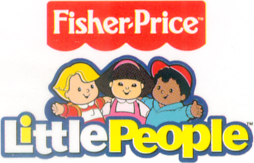
Little People is a toy brand for children ages 6–36 months and to ages 3 and up, originally produced by Fisher-Price, Inc. in the 1960s as the Play Family People. The current product line consists of playsets, mini-sets and accessories, books, CDs, and DVDs focusing on various configurations of 5 characters named Eddie, Tessa, Mia, Koby, and Sofie. Mattel reports that since the brand's launch, over 2-billion Little People figures have been sold in over 60 countries. In 2016, Little People was inducted into the National Toy Hall of Fame.
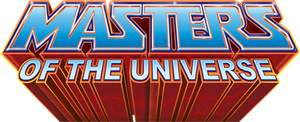
Masters of the Universe is a sword and planet-themed media franchise created by Mattel. The main premise revolves around the conflict between He-Man and Skeletor on the planet Eternia, with a vast lineup of supporting characters in a hybrid setting of medieval sword and sorcery, and sci-fi technology. A follow-up series, She-Ra: Princess of Power revolves around He-Man's sister She-Ra and her rebellion against The Horde on the planet Etheria. Since its initial launch, the franchise has spawned a variety of products, including multiple lines of action figures, six animated television series, several comic series, video games, books and magazines, a daily newspaper comic strip, and two feature films.
Rainbow Brite is a media franchise by Hallmark Cards, introduced in 1984. The animated Rainbow Brite television series first aired in 1984, the same year Hallmark licensed Rainbow Brite to Mattel for a range of dolls and other merchandise. A theatrical feature-length film, Rainbow Brite and the Star Stealer, was released by Warner Bros. in 1985. The franchise was rebooted in 2014 with a three part mini-series released on Hallmark's online streaming video service, Feeln. A line of new merchandise by Hallmark online and in its shops debuted in 2015.
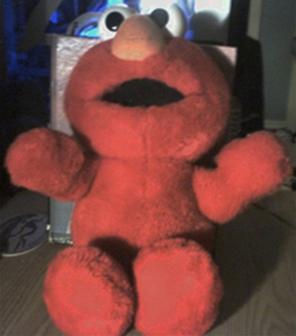
Tickle Me Elmo is a children's plush toy from Tyco Preschool, a division of Tyco Toys, of the Muppet character Elmo from the children's television show Sesame Street. When squeezed, Elmo recites his trademark giggle. When squeezed three times, Elmo shakes and vibrates.
Polly Pocket is a toy line of dolls and accessories first founded and designed by Chris Wiggs in 1983 and licensed by Bluebird Toys from 1989 until both entities/properties were acquired by Mattel in 1998.

The Rugrats Movie is a 1998 American animated comedy film based on the Nickelodeon animated television series Rugrats. It was directed by Igor Kovalyov and Norton Virgien and was written by David N. Weiss & J. David Stem. The film features the voices of E. G. Daily, Tara Strong, Christine Cavanaugh, Kath Soucie, Cheryl Chase, Cree Summer, Jack Riley, Melanie Chartoff, Michael Bell and Joe Alaskey, along with guest stars David Spade, Whoopi Goldberg, Margaret Cho, Busta Rhymes, and Tim Curry. The film takes place between the events of the series' fifth and sixth seasons, and it follows Tommy Pickles as he and the rest of the Rugrats along with his new baby brother, Dil, eventually get lost into the deep wilderness after taking a high-speed ride on the Reptar Wagon, and embark on an adventure to find their way home in the forest while being pursued by circus monkeys and a predatory wolf along the way. The Rugrats Movie is the first feature film based on a Nicktoon and the first installment in the Rugrats film series.
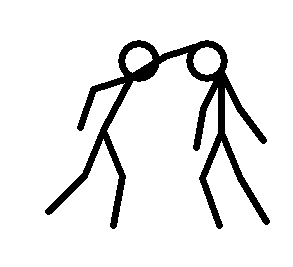
A piledriver is a professional wrestling driver move in which the wrestler grabs their opponent, turns them upside-down, and drops into a sitting or kneeling position, driving the opponent head-first into the mat. The technique is said to have been innovated by Wild Bill Longson.
The Get Along Gang is a group of characters created in 1983 by Tony Byrd, Tom Jacobs, Ralph Shaffer, Linda Edwards, Muriel Fahrion, and Mark Spangler for American Greetings' toy design and licensing division, "Those Characters from Cleveland", for a series of greeting cards. The Get Along Gang is a group of 6 pre-adolescent anthropomorphic animal characters in the fictional town of Green Meadow, who form a club that meets in an abandoned caboose and who have various adventures whose upbeat stories were intended to show the importance of teamwork and friendship. The success of the greeting card line led to a Saturday morning television series, which aired on CBS for 13 episodes in the 1984–1985 season, with reruns showing from January to June 1986.
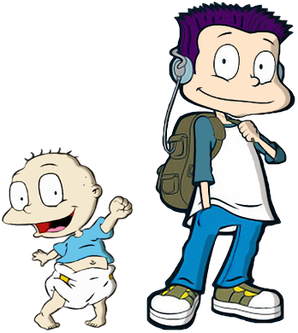
Thomas Malcolm "Tommy" Pickles is a fictional character and the main protagonist of the animated children's television series Rugrats, the reboot, and its spinoff series All Grown Up!. He is also the protagonist of The Rugrats Movie (1998) and Rugrats Go Wild (2003), and a major character in Rugrats in Paris: The Movie (2000), as well as other various Rugrats-related media.

JoJo's Circus is a stop-motion animated television series created by Jim Jinkins, David Campbell, Lisa Jinkins, and Eric Weiner and produced by the Canada-based Cuppa Coffee Studios and Cartoon Pizza. The series was written by Douglas Wood, who previously worked for Tiny Toon Adventures and Animaniacs as a creative executive. The series' songs were composed by Jeffrey Zahn and Jim Latham, with lyrics done by Judy Rothman. The theme song was performed by BECKY.
Littlest Pet Shop is a toy franchise and cartoon series owned by Hasbro and currently under license with Basic Fun!. The original toy series was produced by Kenner in the early 1990s. An animated television series was made in 1995 by Sunbow Productions and Jean Chalopin Creativite et Developpement, based on the franchise.

Ideal Toy Company was an American toy company founded by Morris Michtom and his wife, Rose. During the post–World War II baby boom era, Ideal became the largest doll-making company in the United States. Their most popular dolls included Betsy Wetsy, Toni, Saucy Walker, Shirley Temple, Miss Revlon, Patti Playpal, Tammy, Thumbelina, Tiny Thumbelina, and Crissy. The company is also known for selling the Rubik's Cube.
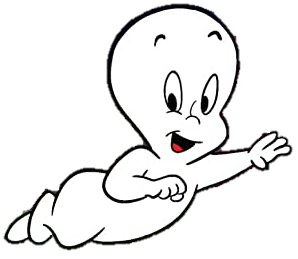
Casper the Friendly Ghost is a fictional character who serves as the protagonist of the Famous Studios theatrical animated cartoon series of the same name. He is a translucent ghost who is pleasant and personable, but often criticized by his three wicked uncles, the Ghostly Trio.

Girls' toys and games are toys and games specifically targeted at girls by the toy industry. They may be traditionally associated either exclusively or primarily with girls by adults and used by girls as an expression of identity. One commentator have argued that the market for girl's toys and games is more challenging than that for boys' toys and games.

Disney's Animated Storybook is a point-and-click adventure interactive storybook video game series based on Walt Disney feature animations and Pixar films that were released throughout the 1990s. They were published by Disney Interactive for personal computers for children ages four to eight years old. Starting from 1994, most of the entries in the series were developed by Media Station. They have the same plots as their respective films, though abridged due to the limited medium.












